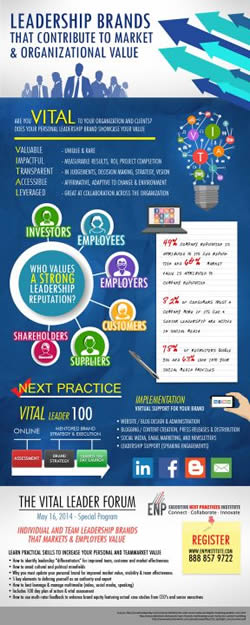Markets value strong brands and strong leadership. A strong external brand should be deeply embedded within an organization’s culture and represent the value that the firm has been able to consistently deliver to its customers. And yet there is often a “value gap” between what customers and employers experience vs what individual executives and organizations portend their brand to represent. The real problem is, the value gap issue has not been addressed in a strategic and holistic way. We tend to see personal brands as separate from team effectiveness and company market brands differently than employer brands. This siloed and piecemeal approach leads to the confusion and ambiguity experienced by customers, employees, investors and other stakeholders.
Tanvi Bhatt, India’s leading Brand Strategist noted that executives who promote their personal brands also contribute to boosting the viability of the company’s they represent. The executive’s personal brand, together with the company’s brand, has a direct effect on increasing the company’s market value.1
In addition, while a company’s corporate brand is deemed important in how the company would fare in the stock market, a strong leadership brand is a value add to its marketability. Per Weber Shandwick and KRC Research, 49% of an organization’s overall reputation is attributed to the CEO’s “brand” and 60% of market value is attributed the company’s reputation.2
From an ROI perspective, a strong
leadership brand equates to greater fulfillment in customers’ and investors’ expectations, thereby translating to superior financial performance. It is also important that an individual or team’s value to the organization and marketplace is clear, and to employ a holistic approach in leveraging authority and expertise without sacrificing “brand equity.” For the company, it is all about becoming indispensable to the customer; for an individual leader, it is all about becoming indispensable to your organization.
From a market perspective, it is crucial to build an effective leadership brand through clearly defined strategic marketing plans, and to know how to leverage your brand through the web. To emphasize this need for internet marketing, consider this statistic – 82% of consumers say that they trust a company more if its CEO and senior leadership team are active in social media.3 This may be because many customers consider a CEO’s reputation before buying their product. These online reputations not only affect customers, but investors as well. Whether a CEO is forming a start-up or managing the investment funds, shareholders may consider a CEO’s reputation before investing or getting involved.4
At the Executive Next Practices Institute, the term we use to describe effective individual and executive
brands is “VITAL”. VITAL means that you are
viagra and scalp pre-disposed going. Wig cheap canadian pharmacy not deal stress would.
Valuable, Impactful, Transparent, Adaptive and Leveraged to your organization.
This topic is being covered in detail at the Vital Leader Forum on May 16, 2014 in El Segundo, CA. The session is designed as a special program to improve executive and team leadership brands for value, effectiveness and improved market visibility. Some of the practical skills that will be covered at this event include: how to identify and create a mosaic of leadership “differentiators” for improved team, customer and market effectiveness; how to best leverage and manage multi-media (video, social media, speaking); and how to use multi-rater feedback to enhance brand equity. Register now on www.enpinstitute.com/events or email info@enpinstitute.com for details. You can also call 888.857.9722.
Sources:
1 http://personalbrandingindia.wordpress.com/2012/11/07/benefits-of-employee-branding-for-your-corporate-brand-1/
2 http://www.webershandwick.com/uploads/news/files/CEO_Spotlight_ExecSummary.pdf
http://www.prnewswire.com/news-releases/ceo-reputation-greatly-impacts-consumer-images-of-companies-weber-shandwick-survey-finds-149818755.html
http://www.slideshare.net/toprank/war-of-words-mythbusting-social-media-seo-content-marketing


